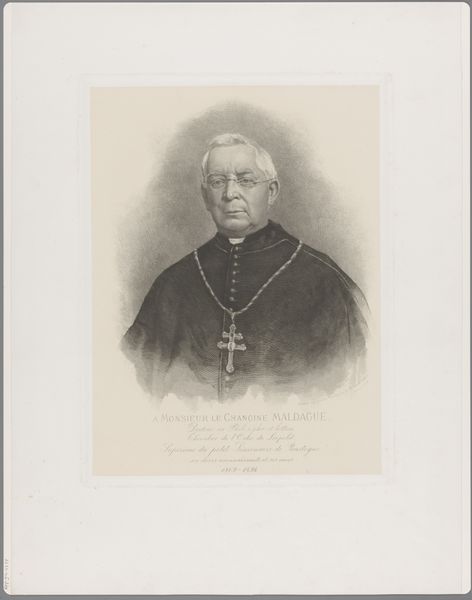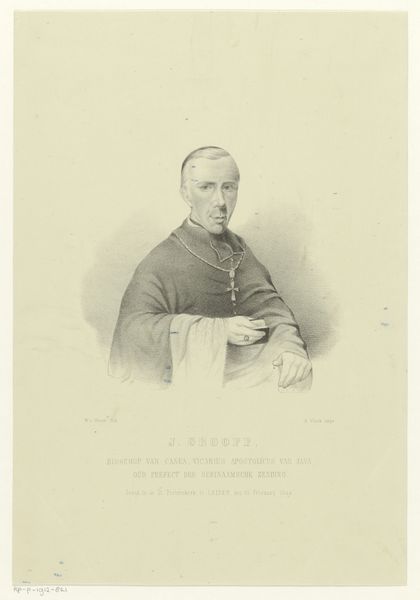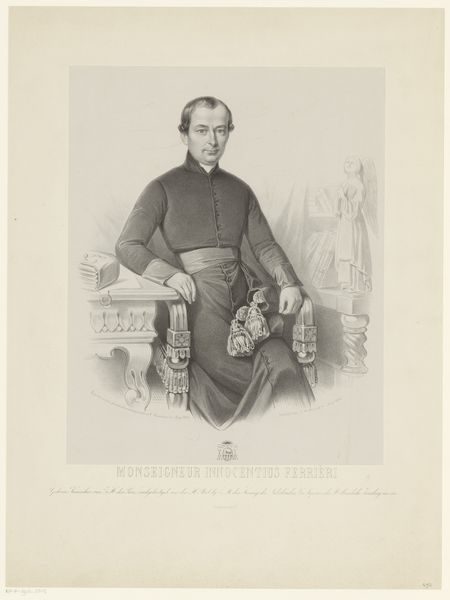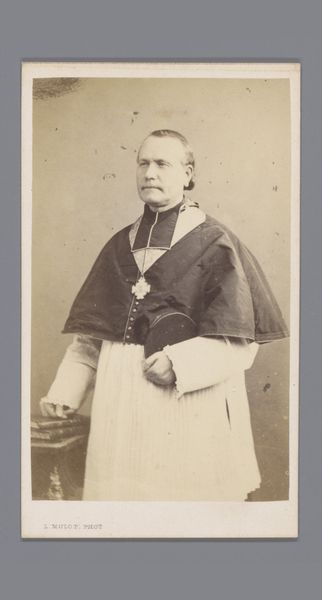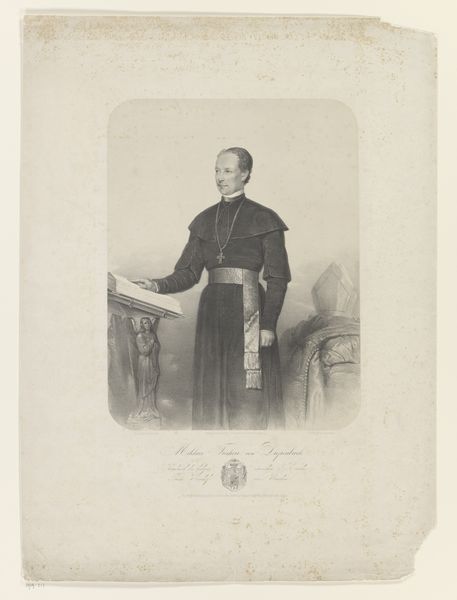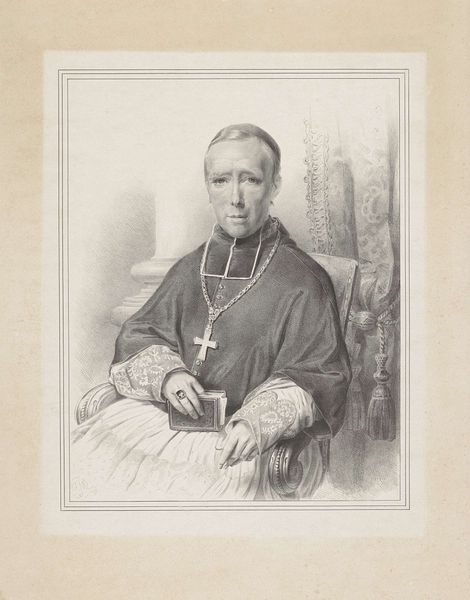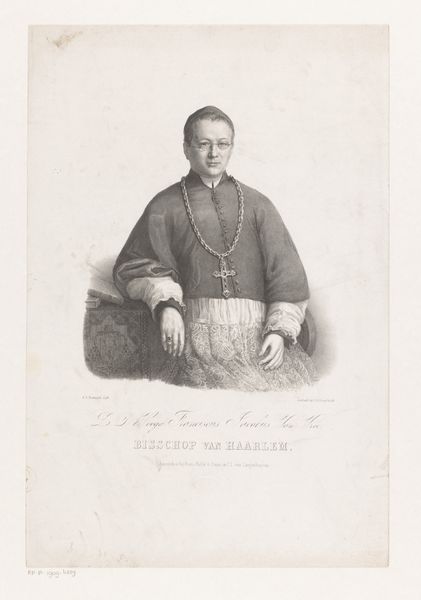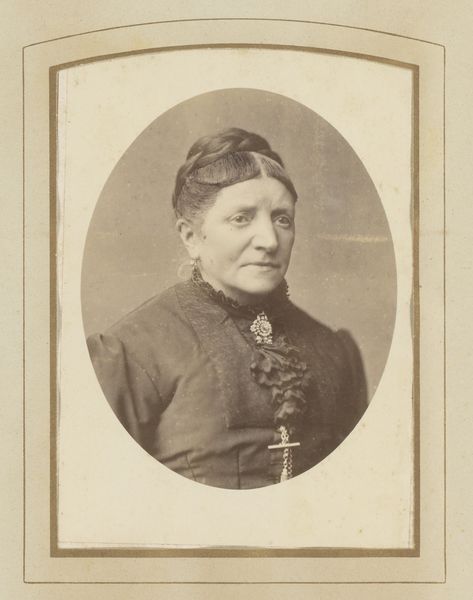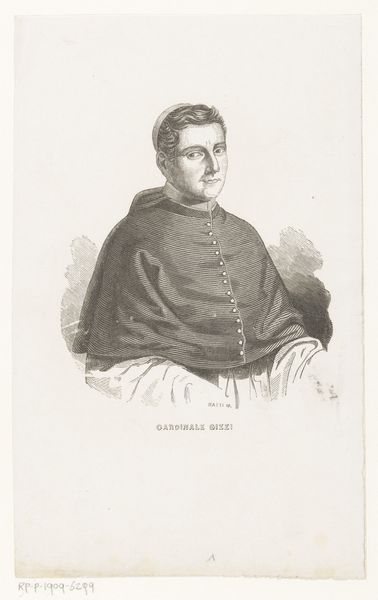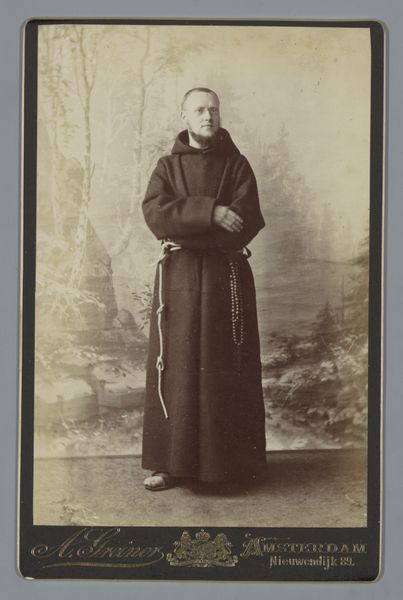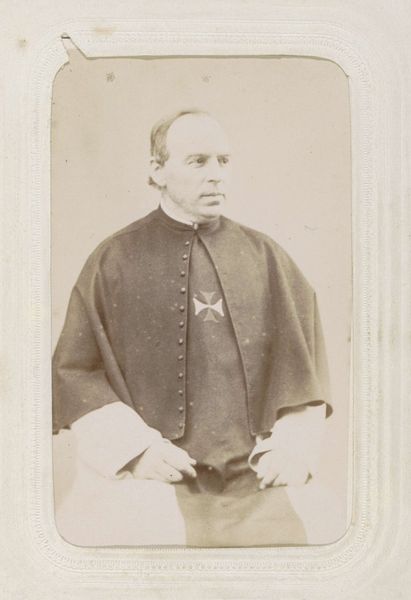
print, engraving
#
portrait
#
pencil drawn
# print
#
academic-art
#
engraving
#
realism
Dimensions: height 562 mm, width 393 mm
Copyright: Rijks Museum: Open Domain
Joseph Schubert made this portrait of Pieter Claessens using lithography, a printing technique that democratized image-making in the 19th century. Unlike traditional engravings that demand meticulous carving, lithography relies on the chemical repulsion between grease and water on a flat stone or metal plate. The artist draws directly onto the surface with a greasy crayon, then treats the stone so that ink adheres only to the drawn areas. This print captures the tonal subtleties and textures of the original drawing. Lithography allowed for relatively quick and inexpensive reproduction, making images like this accessible to a wider audience. The process facilitated the spread of information and ideas but also changed the status of the image. By valuing the hand of the artist, and considering the social and economic context in which it was produced, we can understand the portrait’s significance.
Comments
No comments
Be the first to comment and join the conversation on the ultimate creative platform.
